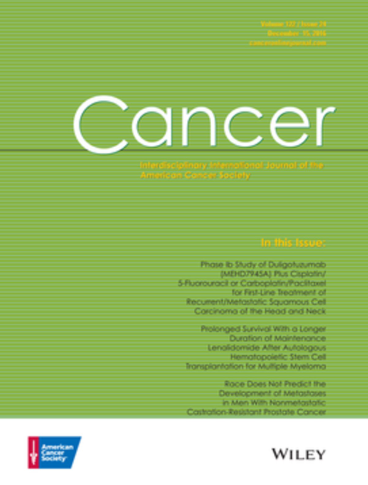Lifetime body weight patterns, weight loss, and renal cell carcinoma subtypes
Abstract
Background
Increased body mass index (BMI) in midlife is a recognized risk factor for renal cell carcinoma (RCC), but data on lifetime BMI patterns and their associations with RCC and subtypes remain limited.
Methods
In the National Institutes of Health–American Association of Retired Persons Diet and Health Study (n = 204,364), the authors evaluated lifetime body weight patterns using: 1) BMI at ages 18, 35, 50, and baseline (mean [SD]: 61.6 [5.3] years); 2) BMI trajectory across adulthood; 3) cumulative exposure to excess weight, measured as weighted years overweight/obese (WYO); and 4) BMI change between specific ages. Cox models estimated hazard ratios (HRs) and 95% confidence intervals (CIs) for overall RCC (n = 1425), aggressive RCC (n = 583), fatal RCC (n = 339), and histologic subtypes, including clear cell RCC (ccRCC, n = 541), papillary RCC (pRCC, n = 146), and chromophobe RCC (chRCC, n = 64).
Results
Higher BMI at all ages was associated with greater hazard of overall RCC and all subtypes (HR, 1.10–1.40 per 5-unit increase), except chRCC (HR, 0.80–0.98). Similar patterns were observed for BMI trajectories indicating weight gain during adulthood to overweight/obesity, compared to maintaining normal BMI. Higher WYO (per SD increase) was associated with an elevated hazard of overall RCC (HR, 1.17; 95% CI, 1.12–2.22), aggressive RCC (HR, 1.21; 95% CI, 1.13–1.29), fatal RCC (HR, 1.16; 95% CI, 1.06–1.27), and ccRCC (HR, 1.20; 95% CI, 1.13–1.30), but not pRCC (HR, 1.13; 95% CI, 0.97–1.32) and chRCC (HR, 0.92; 95% CI, 0.68–1.25). BMI reduction of ≥10%, particularly after age 50 (HR, 0.72; 95% CI, 0.52–0.99), was associated with lower RCC hazard.
Conclusions
Lifetime excess weight and adult weight gain were associated with increased risk of RCC, particularly ccRCC, whereas weight loss was associated with reduced risk.

 求助内容:
求助内容: 应助结果提醒方式:
应助结果提醒方式:


